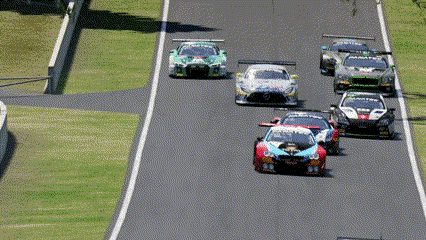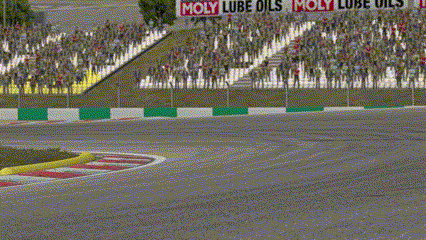The 2023 Le Mans is significant for two reasons. This year will mark the 100th anniversary of the great race (but not the 100th running). It will also mark the return of the manufacturers with Porsche, Cadillac and Peugeot all entering LMH or GTP cars for the overall win. Ferrari will return to the top class with a works entry for the first time since the 1970s. The top class (Hypercar) will have the largest number of entries since 2011. However, part of what has brought this increase in numbers has been strict cost and development restrictions, including the dreaded BOP. BOP, or Balance of Performance, has become a controversial topic, with its prevalence in modern motorsports. GT2/GT3/GT4, IMSA’s GTP, LMP2 and TCR all utilise some form of performance balancing. Many series see BOP as a way of ensuring that everybody from small privateer to a global manufacturer can build a competitive car without having to spend excessive millions in development. Only Formula 1 still has a grid of individual cars, with results based on pure pace and merit. As a result of BOP, many people look at modern racing as a shadow of its former self. Like everything in life however, there are two side to this story, of which I will discuss.
Le Mans Prototypes-F1 with wheels
In the history of the WEC/WSC, there are generally two stand out periods of unlimited spending and development that led to legendary machinery. These are the Group C era and the LMP1 era. The Group C era began in 1982 with the aim of being a fuel formula. In general, you could design whatever you wanted as long as you didn’t use any more than “X” amount of fuel. While a little slow to start, by the end of the 1980s Group C had popularity to rival Formula 1. Jaguar, Sauber Mercedes, Toyota, Nissan, Aston Martin and Porsche all took part, producing iconic vehicles such as the C9, 962 and the XJR-9 (my favourite). The races were lairy, noisy and peak 80s excess. LMP1 had a slightly smaller selection of manufacturers and was more spread out than Group C but it all culminated in the “Hybrid era”, 2013-2017. Audi, Toyota and Porsche would build 1000hp 4-wheel drive hybrid monsters capable of competing with formula 1 cars of the day. Nissan even brought a 1000bhp front wheel drive car! Both categories had moments that would live in legend. Group C featured Stefan Bellof’s qualifying lap in which he would set a lap record of the fearsome Nürburgring Nordschliefe and LMP1 would have the 2008 Le Mans where the trio of vastly quicker Peugeots would lose to the lone Audi R10 in the rain after a 24-hour to-and-fro.
Porsche 962 @ Le Mans 1982

LMP1 (VRC Protoytpes) @ Spa
Leave it to F1
Alas, all good things come to an end. A fatal switch to 3.5l engines in 1991 led to a mass exodus of manufacturers, with many ending up in F1 (By design?). By 1993 only Peugeot would remain, busing employees to Paul Ricard to fill the empty grandstands. Even before the switch there were signs that Group C was starting to struggle. The iconic Porsche 962 was essentially the same car that had begun life as the 956 in 1982. Likewise, Jaguar and TWR had reached the end of their iconic V12 and were struggling to develop a replacement engine. LMP1 would have a more obvious decline. For most of its existence, Audi was the only entrant, with others dipping their toe in occasionally. When both Audi and Porsche left at the end of 2016 and 2017 respectively, it left only Toyota with a top-spec hybrid car among a field of privateer cars (and Ginetta). In both cases costs began mount and other series began to offer better value for money, with the 3.5l engine rules encouraging a move to F1 with Mercedes and Peugeot doing so in 1993 & 1994 respectively, and Formula-e having a better balance of cost to electrification. LMP1 did employ a EoT (Equivalence of Technology) to attempt to balance privateer non-hybrid cars with the Toyotas but was employed in a rather heavy-handed fashion, with the TS050 either dominating or being completely out of the picture. Given how obvious it was that the Toyota was so superior to the rest of the field, it made a mockery of the class. For 2021 LMP1 would be replaced with Hypercar, a slower, BOP-based category. While not as spectacular as before. the new rules would be instantly popular, with Ferrari and Peugeot quickly announcing factory entries for 2023. Unifying with the American GTP class would further increase field sizes with Porsche, BMW and Cadillac also committing to returning to Le Mans,

BTCC-A willing sacrifice
The undoubted highlight of the BTCC has been the “Super Touring” era from 1991-2000. Unlike Group C, Super Touring was very restrictive in what could be done to the car. Crucially however, they did leave room for technical development. You may only be allowed 2.0l but the was no power limit, you could have FWD, RWD and even 4WD, so long as it matched the road car. The series would peak in 1998 with Renault, Volvo, Honda, Audi, Nissan, Peugeot, Ford and Vauxhall all entering works teams. BMW and Alfa Romeo would also have super tourering programs earlier in the decade. Initially designed to replace the increasing expensive Group A rules, Super Touring would succumb to the same fate. By the end of the decade, the Prodrive-developed Ford Mondeo would be more at home in an F1 paddock than that of a domestic series. By comparison, the current day NGTC cars are effectively spec cars with different bodies, all run by mostly privateer teams. Cars are very tightly controlled with a sprinkling of BOP if required (although not a full BOP like other series). While they may not be as technically interesting, NGTC has now lasted longer than the Super Touring era, and most World Touring car attempts, and continues to provide a great spectacle. While the cars may have been icons of their eras, 1990s touring car racing was not. Many races were more processional than today, and often the racing was “closer”. The current NGTC allows any car to win on a given weekend, but still requires a top driver to win a championship. The BTCC grid is bigger than ever now, and with more competition than ever. NGTC has also allowed the retention of brand variety without the massive factory spending. Ford, Toyota, BMW, Cupra, Hyundai, Infiniti, Honda and Vauxhall have all been represented. Super Touring will always live on as the childhood crash fest that made your dads car cool, but taking off the rose-tinted spectacle and you see a series that spent a fortune on cars that delivered no more than we have today, less in some cases.
GT3-Need I go on?
Since the beginning of the GT3 championship under SRO, the category has grown to enormous proportions. GT3 regulations have been used in their own GT World Championship, including regional series, adopted by IMSA, the DTM and will make their Le Mans debut in 2024. An active amateur class has helped to ensure full grid and there appears to be no slowdown in manufacturer involvement. GT3 is the only class on this list that I am not going to list the manufacturers involved because there are too many to mention, including some you didn’t know about (Morgan anyone?). BOP really suits GT3 as it is not always a top class, usually on track with prototypes. By balancing performance, it allows the organisers to control the overall speeds of the cars, while ensuring that all brands are capable of winning, without sacrificing their resemblance to road cars. Next…

GT3 @ Bathurtst
LMP2-AKA the Oreca Cup
This is a clear example of balancing gone wrong. Unknown to most, there are actually 4 LMP2 chassis currently homologated. Originally LMP2 was a lower powered class for smaller manufacturers and privateers called “LMP675”. This would soon become LMP2, with its focus switching to privateer and amateur class entries. In 2017 there would be a change to the LMP2 regulations in order to slow the cars down and improve safety while managing costs. Open cockpit would be banned and a spec Gibson V8 would be used in one of four homologated chassis from Oreca, Dallara, Multimatic and Ligier. As these are customer cars there would be no continuous development or upgrades. Unfortunately, it quickly became clear that the Oreca 07 was a class above the rest. For 2018, much to the annoyance of Oreca, the other three manufacturers would be allowed one joker upgrade to allow them to “catch up but not surpass” the 07. These upgrades would not work, although the Ligier would have some success. Both IMSA and the ACO would decide to enact BOP going forward but the inherent characteristics of the Oreca chassis would ensure that only a few years later seeing an LMP2 car that isn’t an Oreca 07 would be like spotting a unicorn. Since 2017 the Oreca has won 17 drivers championships while its closest rival, the Ligier JS P217, has only won only 9 races, four of which would be as the Nissan DPi.

Conclusion-A necessary evil?
Top class sportscar racing has had its periods of great extravagance and spending, resulting in some truly amazing machinery. More than other series though it knows the importance of having a rule set that encourages teams, especially amatuer/privateers, and manufacturers to take part and stay involved. As much as we would like to see the return of the fire breathing Group C cars, or the door-banging entertainment of Super touring, the survival of the class is something that cannot be overlooked. Besides, if the racing is good, then who amongst us really cares?
